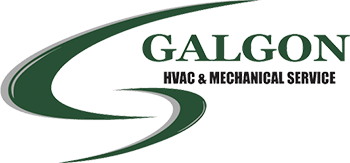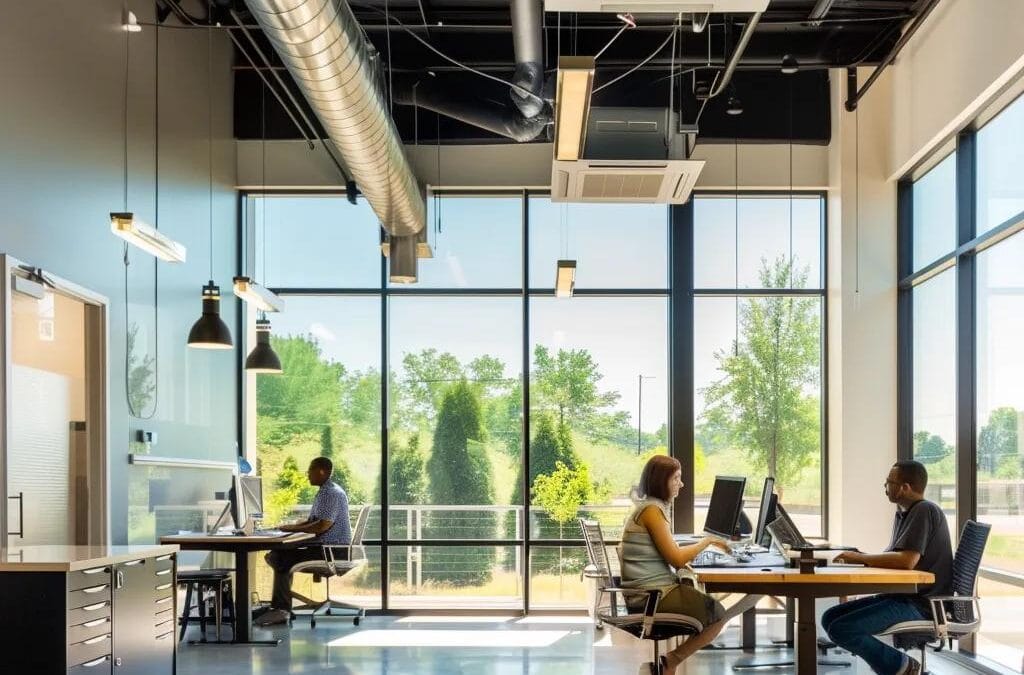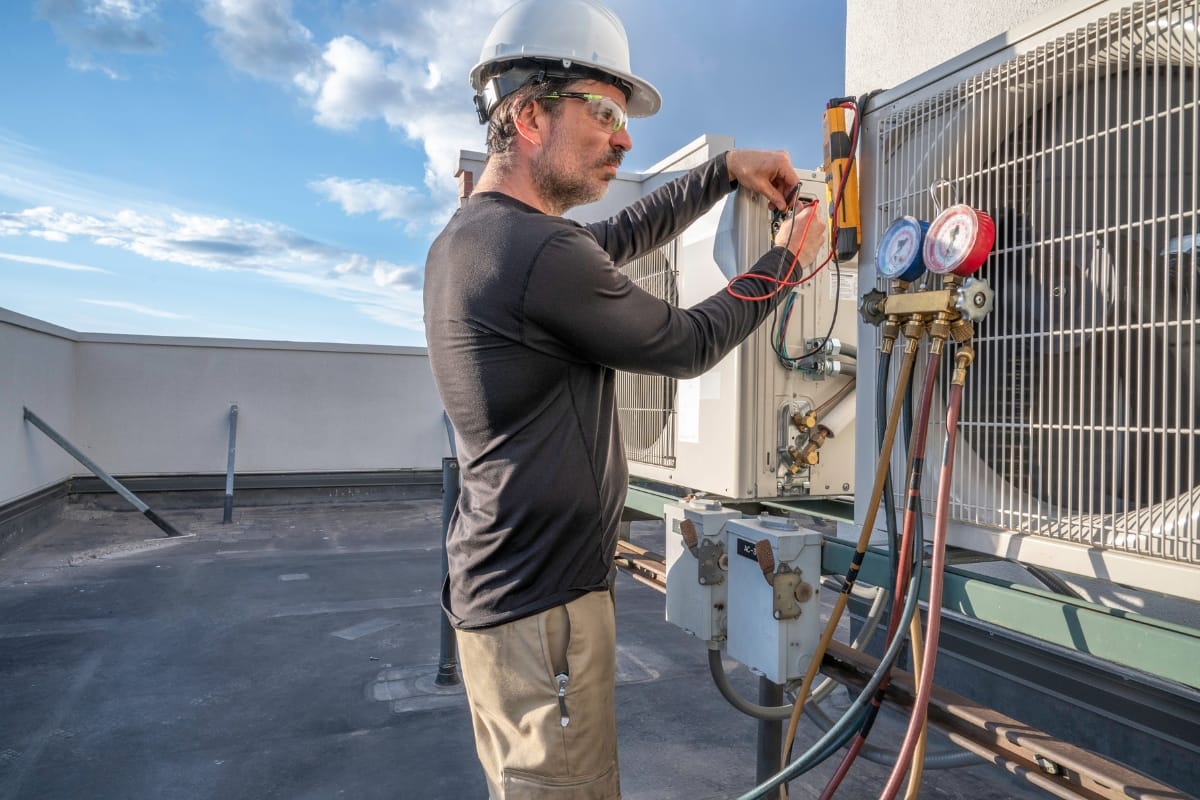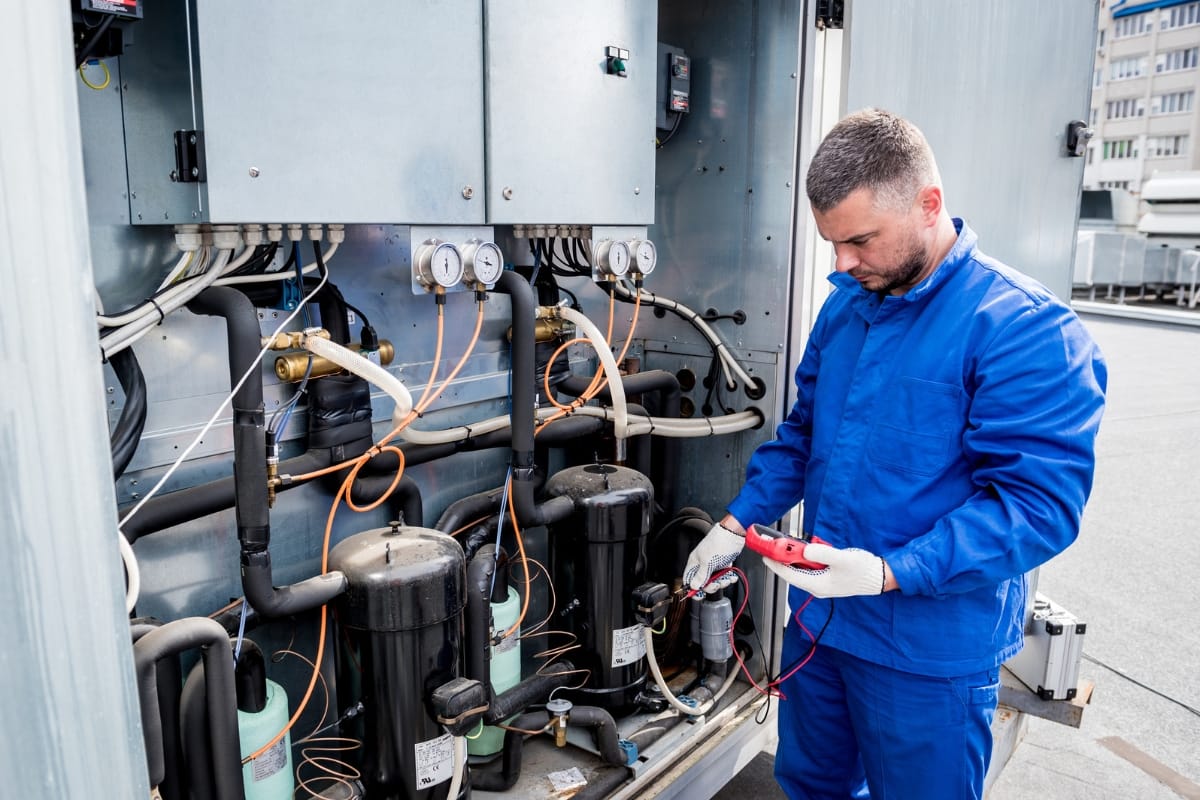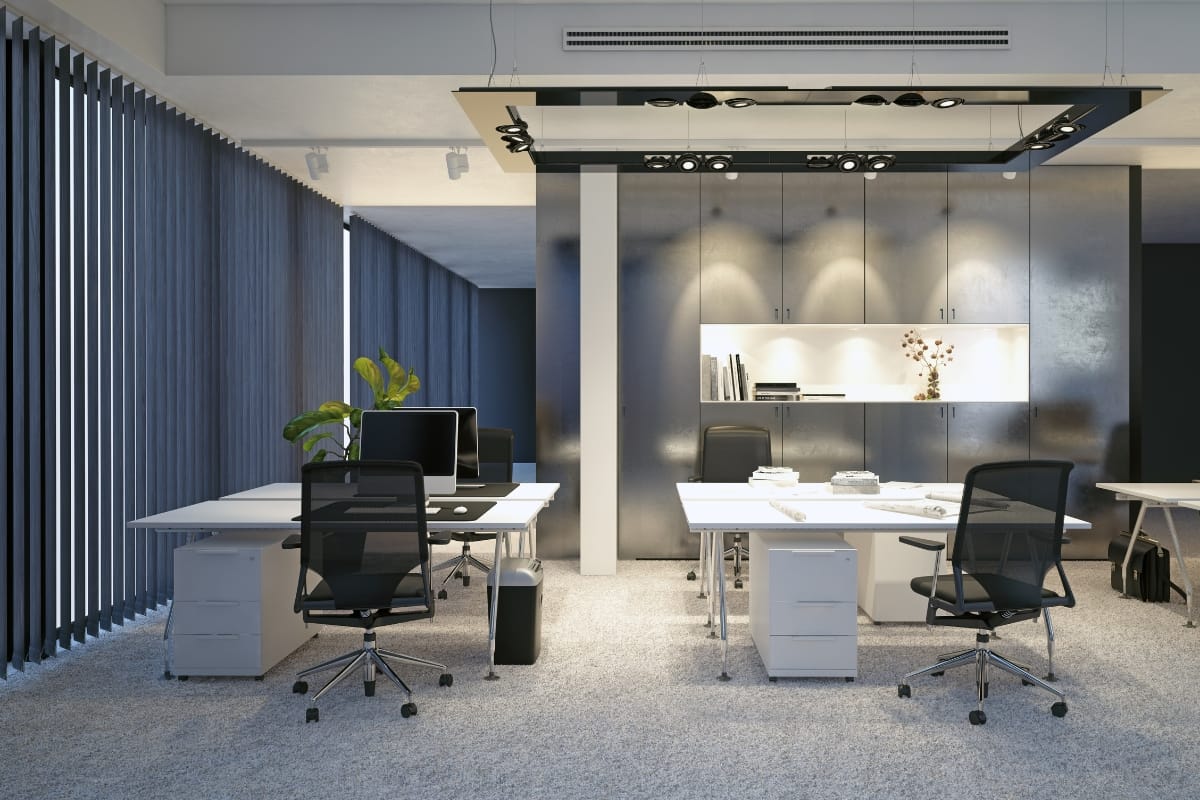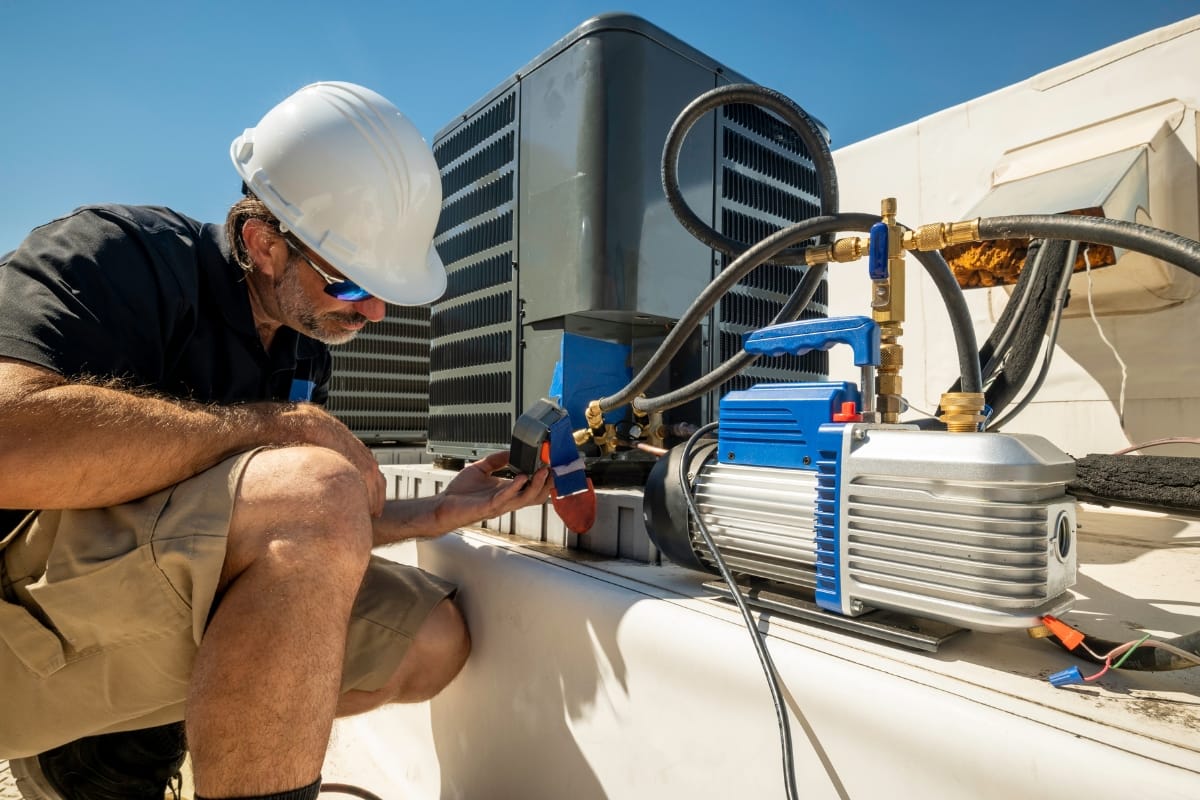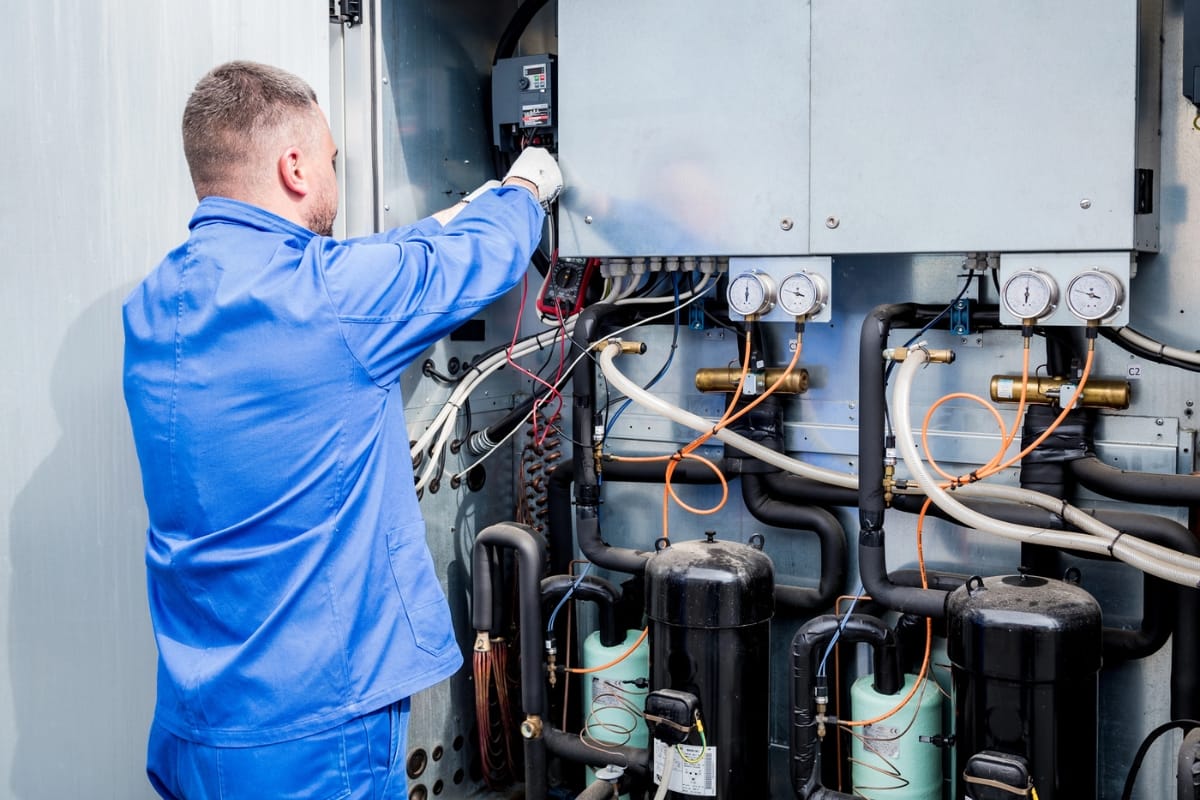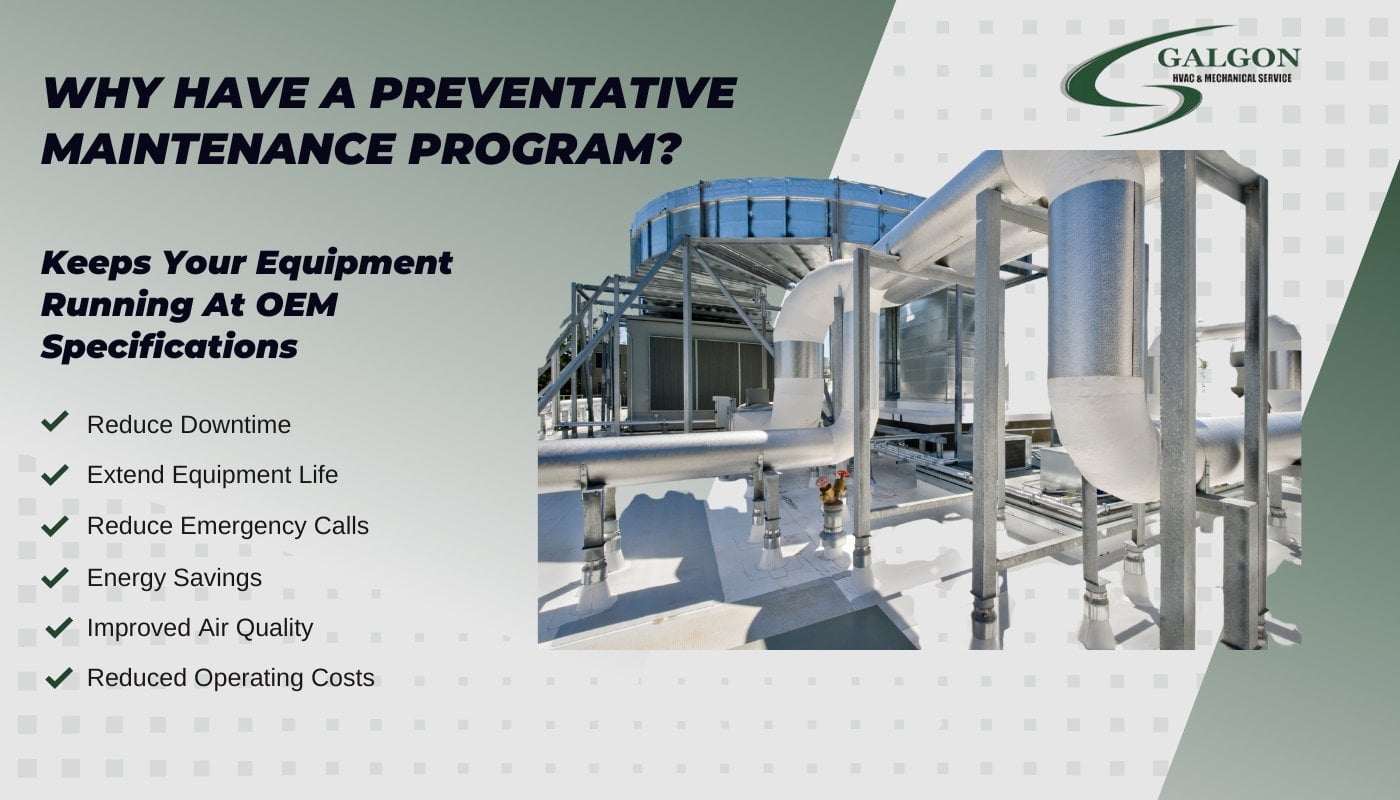In today’s fast-paced business world, maintaining a comfortable and energy-efficient workspace isn’t just a matter of convenience—it’s a driver of productivity. Commercial HVAC systems play a pivotal role in shaping the work environment, influencing everything from employee focus and morale to energy costs and equipment performance. When HVAC systems are optimized for efficiency, they do more than regulate temperature—they create the conditions for people to do their best work. This article explores how improved commercial HVAC efficiency can reduce distractions, support health, and even enhance your bottom line.
Commercial HVAC Efficiency: Cut Costs, Not Comfort
How Does Commercial HVAC Efficiency Directly Impact Workplace Productivity?
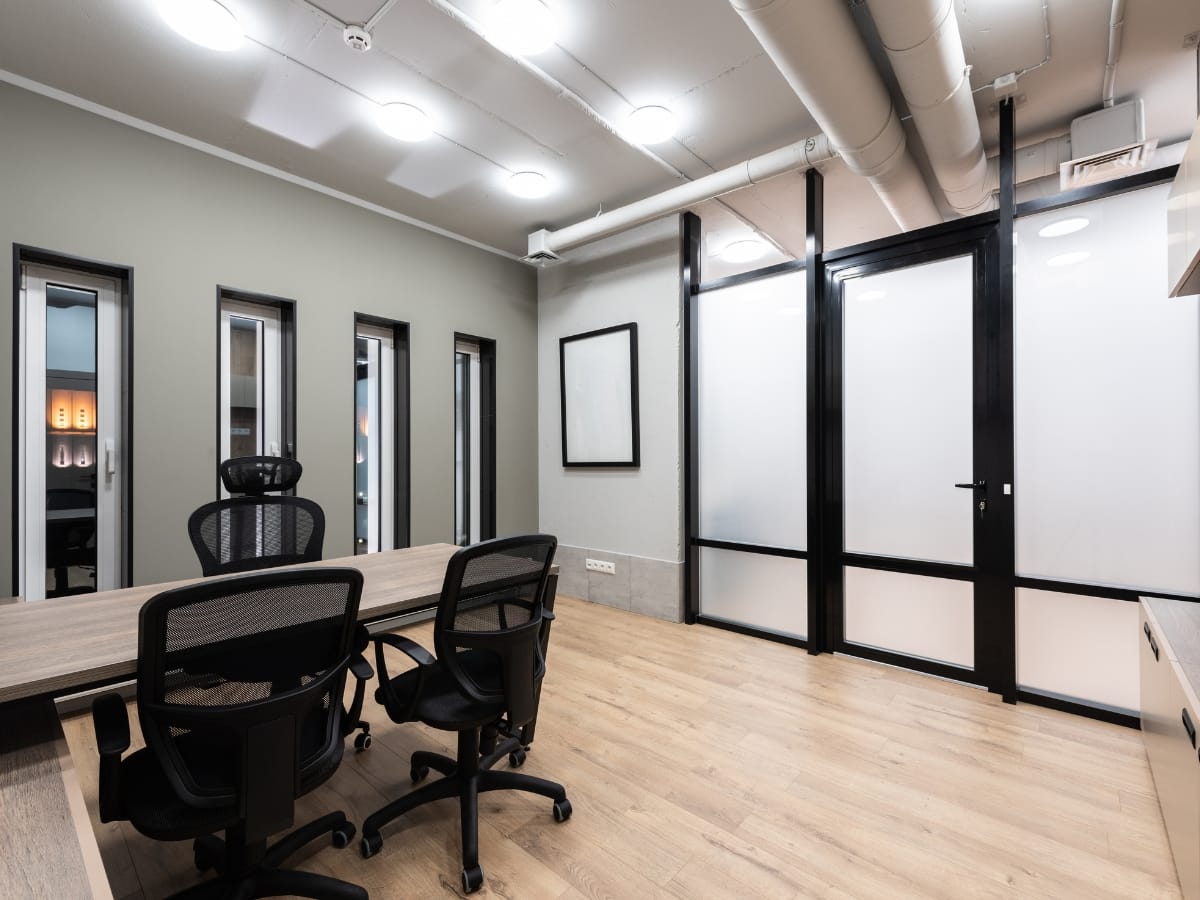
Efficient commercial HVAC systems regulate temperature, manage humidity, and filter indoor air, ensuring employees remain comfortable, healthy, and focused. By optimizing system performance, businesses reduce energy waste and create stable conditions that support cognitive function and minimize sick days. These environmental controls form the foundation for peak workplace productivity and business success.
Why Is Temperature Control Essential for Employee Focus and Comfort?
Temperature control regulates indoor climate by maintaining consistent air temperatures between 68–74 °F, which supports alertness and comfort. When the HVAC system holds thermal conditions within an ideal range, employees experience fewer distractions from chills or overheating, leading to sustained concentration and fewer comfort-related breaks.
Before evaluating temperature settings in isolation, consider these key benefits of precise thermal control:
- Enhanced Cognitive Performance: Maintaining 70 °F promotes faster decision-making and problem-solving.
- Reduced Absenteeism: Consistent temperatures lower stress on the body’s thermoregulation systems.
- Improved Morale: Comfortable staff report higher job satisfaction and engagement.
Impact of Temperature on Cognitive Performance
Research indicates that maintaining a consistent indoor temperature between 68–74°F can significantly enhance cognitive function, leading to improved decision-making and problem-solving abilities. This optimal temperature range minimizes distractions and supports sustained concentration in the workplace.
This research supports the article’s claim that precise temperature control is essential for employee focus and comfort, directly influencing workplace productivity.
Precision in temperature management naturally leads to the importance of indoor air quality for health and performance.
How Does Indoor Air Quality Affect Employee Health and Performance?
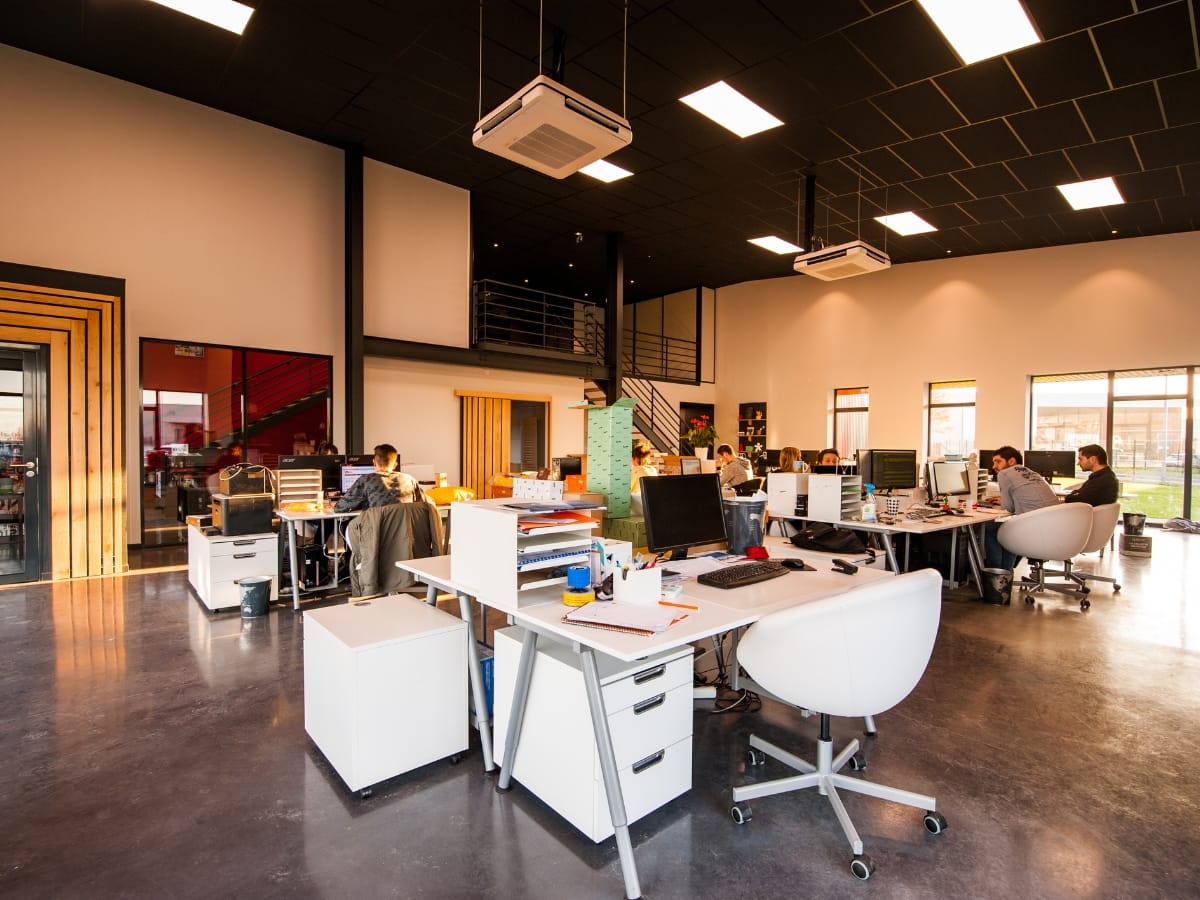
Indoor air quality (IAQ) describes pollutant levels, ventilation rates, and filtration methods that influence respiratory health and alertness. High-efficiency filters and properly balanced ventilation systems remove allergens, volatile organic compounds (VOCs), and CO₂ buildup, directly linking cleaner air to improved concentration and lower sick-leave rates.
How Indoor Air Quality Impacts Health and Performance
Indoor air quality refers to the levels of pollutants, ventilation rates, and filtration methods that shape a workspace’s environment. When a building circulates fresh air six to twelve times per hour, studies show cognitive function improves, and keeping CO₂ levels below 1,000 parts per million can cut drowsiness by up to 25 percent. High-efficiency filters—such as HEPA combined with activated carbon—remove roughly 99 percent of volatile organic compounds and common allergens. With fewer airborne irritants, employees experience fewer headaches, less fatigue, and reduced respiratory issues. Over time, this cleaner air leads to fewer sick days, more steady attendance, and a measurable boost in focus and productivity.
Effects of Poor Air Quality on Employee Well-Being
Without balanced ventilation and effective filtration, workplaces can accumulate dust, mold spores, and chemical off-gassing from building materials or cleaning supplies. These contaminants trigger allergy flare-ups, asthma attack,s and general discomfort. Even moderate levels of indoor pollutants increase the risk of eye irritation and skin dryness, drawing attention away from tasks and eroding morale. By contrast, properly maintained HVAC systems help teams feel healthier and more alert, supporting both individual wellness and broader organizational performance goals.
Benefits of Moisture Management for Comfort and Equipment
Maintaining indoor humidity between 40 and 60 percent relative humidity strikes a balance that prevents dry air from irritating eyes and throats while avoiding excessive moisture that breeds mold. In this range, static electricity drops, which safeguards sensitive electronics such as servers and printers from electrostatic discharge. Consistent humidity also shields circuit boards and metal contacts from corrosion. When building occupants enjoy stable humidity, they report fewer distractions related to dry skin or musty odors, and IT departments handle far fewer hardware failures attributed to environmental stress.
Energy-Efficient Commercial HVAC Systems Deliver Cost and Environmental Benefits
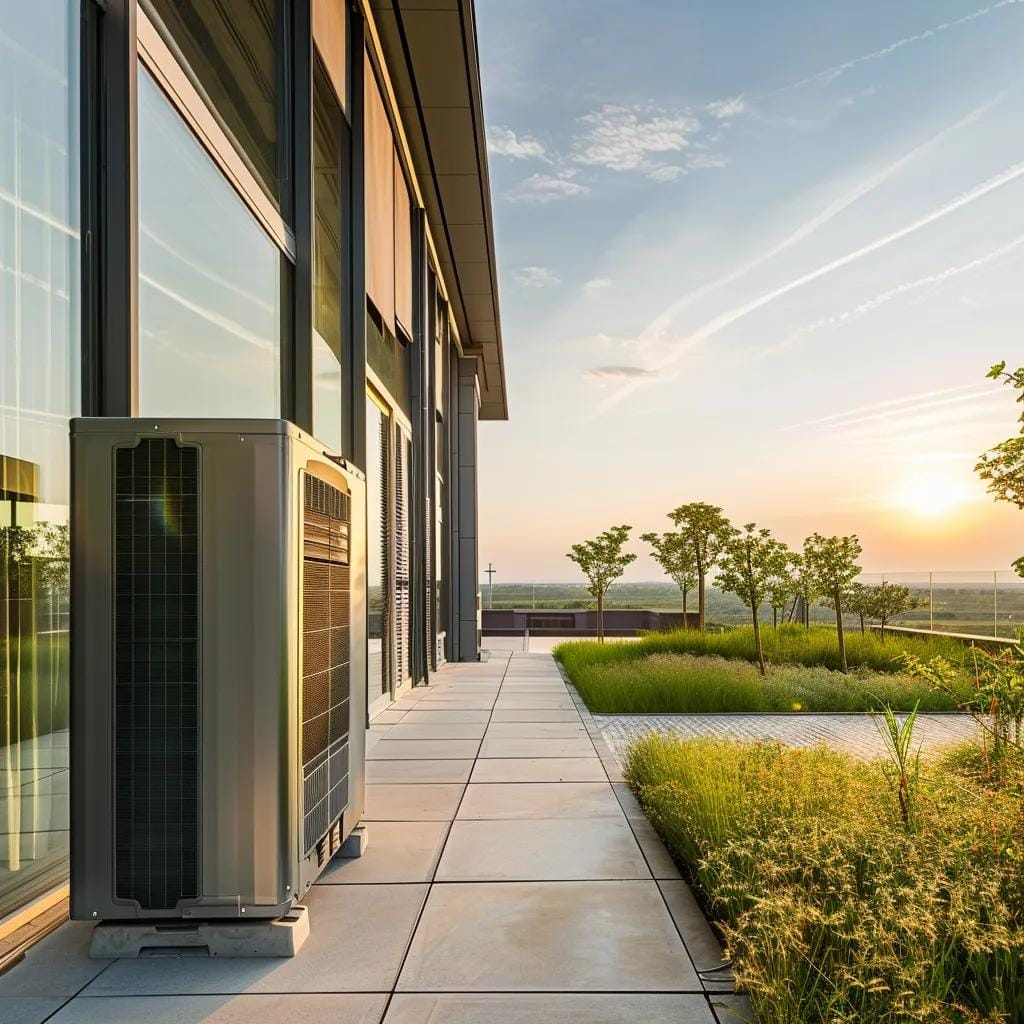
Upgrading to energy-efficient HVAC equipment and controls lets businesses cut power consumption by 20 to 40 percent. Modern high-efficiency boilers, chillers, and rooftop units use advanced heat-exchange designs and variable-speed drives to adjust output precisely to building load. Paired with smart controls—such as programmable thermostats and occupancy sensors—these systems avoid wasted runtime and shift cooling or heating away from peak-rate hours. The result is an average 25 percent reduction in utility expenses, which quickly offsets upgrade costs.
Reducing Carbon Footprints Through Lower Emissions
Lower energy use translates directly into fewer greenhouse gas emissions. Commercial facilities that switch to high-efficiency HVAC can shrink their carbon output by up to 35 percent. Improved system performance also cuts refrigerant leakage, and many new units employ low-global-warming-potential refrigerants. Together, these factors support corporate sustainability goals and help properties meet tightening emissions regulations without sacrificing occupant comfort.
Operational Savings and Predictable Budgets
When an HVAC system uses significantly less electricity and natural gas, operational expenses become more stable. Rather than facing wildly fluctuating bills, facility managers see more predictable monthly costs. Maintenance expenses also drop: variable-speed motors and self-diagnostic controls reduce mechanical wear and alert technicians to issues before they escalate. Fewer breakdowns mean less emergency repair spending and minimal business disruption.
Fast Payback and Strong ROI
Although installing energy-efficient HVAC requires upfront investment, payback periods typically range from three to seven years. Incentives—from federal tax credits to local utility rebates—often cover a portion of equipment and installation costs, accelerating returns. Over a system’s 15- to 20-year lifespan, total savings can exceed 150 percent of initial outlays when maintenance reductions and incentives are factored in. This clear financial upside makes efficiency upgrades an easy sell to stakeholders.
Smart Controls and Building Automation Enhance Performance
Integrating HVAC systems with building automation platforms takes efficiency to the next level. Internet-connected thermostats and temperature sensors communicate in real time, coordinating with lighting and occupancy controls to deliver heating or cooling only where and when it’s needed. Advanced fault detection algorithms identify airflow blockages, refrigerant leaks, or sensor failures immediately, triggering maintenance before comfort or efficiency suffers. Data-driven dashboards let facility teams track system performance, energy use, and cost savings, supporting continuous optimization.
How Does Preventative HVAC Maintenance Enhance System Efficiency and Productivity?

A disciplined maintenance program keeps HVAC systems running at peak performance. Each year, equipment can lose 5 to 10 percent of its original efficiency without proper care. Scheduled inspections, filter changes and coil cleanings restore lost capacity and prevent minor issues from growing into costly failures. By maintaining consistent temperature control, businesses support comfortable work environments that boost employee focus and productivity.
Routine Inspections and Maintenance Agreements
Routine inspections catch small problems—such as refrigerant leaks, clogged drains or airflow restrictions—before they escalate. Early detection means technicians can repair seals, tighten electrical connections and clear obstructions swiftly, preserving system efficiency. Maintenance agreements often include priority service scheduling and fixed rates, so facilities managers can plan budgets with confidence and avoid the need for emergency call-outs. Detailed service reports document every inspection and adjustment, giving decision-makers clear insight into system health over time.
Reducing Downtime and Extending Equipment Lifespan
Preventative maintenance replaces worn parts and balances system pressures to prevent sudden breakdowns. Changing filters every three months maintains proper airflow, and cleaning coils can restore as much as 12 percent of a unit’s thermal output. Well-maintained HVAC systems experience fewer unplanned outages, which means less disruption to daily operations. By extending equipment life by 20 to 30 percent, organizations defer the need for expensive replacements and keep capital expenditures on a predictable schedule.
Improving Indoor Air Quality and Energy Use
Clean coils and fresh filters ensure optimal heat exchange and airflow, which lowers motor strain and reduces energy consumption. When coils are free of dirt and debris, the system can transfer heat more efficiently, cutting compressor runtime and electricity costs. Fresh filters remove dust, pollen, and other airborne particles, improving indoor air quality and helping to prevent allergy and asthma flare-ups among occupants. Better air circulation also maintains humidity levels more effectively, protecting both electronic equipment and building materials from moisture-related damage.
How Can Advanced Commercial HVAC Technologies Boost Workplace Productivity?
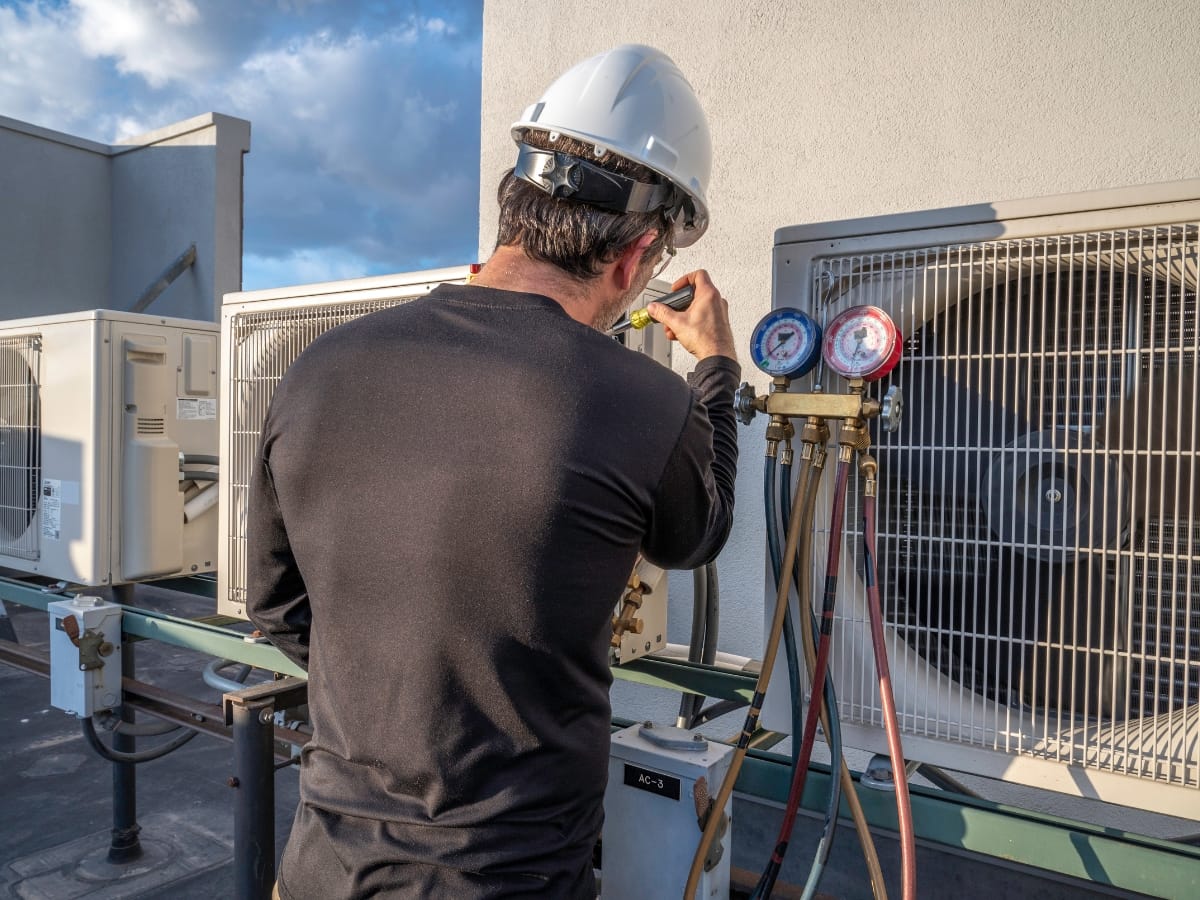
Modern commercial HVAC systems go beyond simple heating and cooling to create tailored environments that support productivity and well-being. Variable refrigerant flow (VRF) technology adjusts refrigerant levels in real time to match each zone’s needs.
This zonal control cuts energy waste by as much as 25 percent, since unoccupied areas receive minimal conditioning while busy workspaces maintain precise temperatures. VRF systems also allow simultaneous heating and cooling in different parts of a building, ensuring every team area—from open-plan offices to enclosed meeting rooms—enjoys the ideal climate.
Geothermal heat pumps draw on the earth’s stable underground temperature, swapping heat with the ground rather than working against extreme outdoor conditions. By tapping into this natural thermal reserve, geothermal systems can reduce heating and cooling costs by up to 45 percent compared to conventional equipment.
Offices benefit from consistent comfort through all seasons, with fewer energy spikes and lower utility bills. Because the underground loop remains out of sight, geothermal installations preserve rooftop and ground-level space for landscaping or solar arrays.
Demand-controlled ventilation (DCV) further refines energy use by adjusting fresh-air intake based on actual occupancy. CO₂ sensors in common areas, conference rooms, and cafeterias detect when spaces fill up, triggering increased ventilation to maintain healthy air quality. When counts fall, the system scales back, cutting energy use by 10 to 20 percent. This approach prevents stale air from lingering during busy periods and avoids over-ventilating empty spaces, striking a balance between comfort and efficiency.
Building automation systems tie all HVAC technologies into a single, intelligent platform. Centralized monitoring tracks temperatures, humidity, equipment run times, and filter status, while smart analytics predict maintenance needs before failures occur. Facility teams receive automated alerts when a coil needs cleaning or a motor draws excessive power, allowing repairs to happen on a scheduled timeline rather than during an emergency. Automated scheduling shifts cooling or heating away from peak-rate hours, maximizing utility savings without manual intervention.
Together, these advanced HVAC features create workplaces that feel comfortable, breathe cleaner air, and cost less to operate. Employees benefit from steady temperatures, balanced humidity, and reduced drafts, all of which support focus and reduce fatigue. At the same time, businesses enjoy predictable energy expenses and equipment that lasts longer thanks to proactive maintenance.
Unique HVAC Challenges and Solutions for Atlanta Businesses

Atlanta’s climate poses a particular challenge to commercial HVAC systems. Hot, humid summers drive up latent cooling loads, making humidity removal as important as temperature control. Proper dehumidification prevents mold growth and maintains occupant comfort. To tackle this, modern systems pair high-efficiency chillers with advanced coil designs that condense moisture more effectively. Air-side economizers bring in outdoor air when conditions allow, reducing mechanical cooling and cutting energy costs during milder nights and early mornings.
Balancing Cooling and Winter Efficiency
While summer demands the most energy, Atlanta’s relatively mild winters present an opportunity to boost efficiency through heat-pump technology. Commercial heat pumps can reverse their cycle to deliver warmth, eliminating the need for separate boilers or electric heaters. By sizing equipment to match both peak cooling and heating loads, businesses avoid the expense of dual systems. Variable-speed compressors adjust output to maintain steady temperatures year-round, reducing on-off cycling that can wear out components and spike utility bills.
Navigating Local Codes and Standards
Atlanta businesses must adhere to Georgia’s energy code and ASHRAE Standard 90.1, which sets minimum efficiency levels for commercial HVAC equipment. Meeting these requirements often unlocks tax incentives or utility rebates that offset upgrade costs. EPA regulations also mandate the phase-out of high-global-warming-potential refrigerants, pushing facilities toward R-410A or newer low-impact alternatives. Compliance ensures legal operation and future-proofs systems against upcoming regulation changes, while contributing to a company’s sustainability goals.
Designing for High Occupancy and Variable Loads
Office towers, retail centers, and hospitality venues in Atlanta experience wide swings in occupancy throughout the day. Demand-controlled ventilation (DCV) uses CO₂ sensors to modulate fresh-air intake, preventing over-ventilation during off-peak hours and ensuring adequate airflow when rooms fill up. Coupling DCV with smart building automation platforms allows facility managers to monitor system performance centrally, schedule maintenance proactively, and adjust setpoints dynamically based on real-time data. This integrated approach cuts energy waste and maintains consistent comfort, even as building usage patterns change.
What Are the Most Effective Strategies to Maximize Commercial HVAC Efficiency?
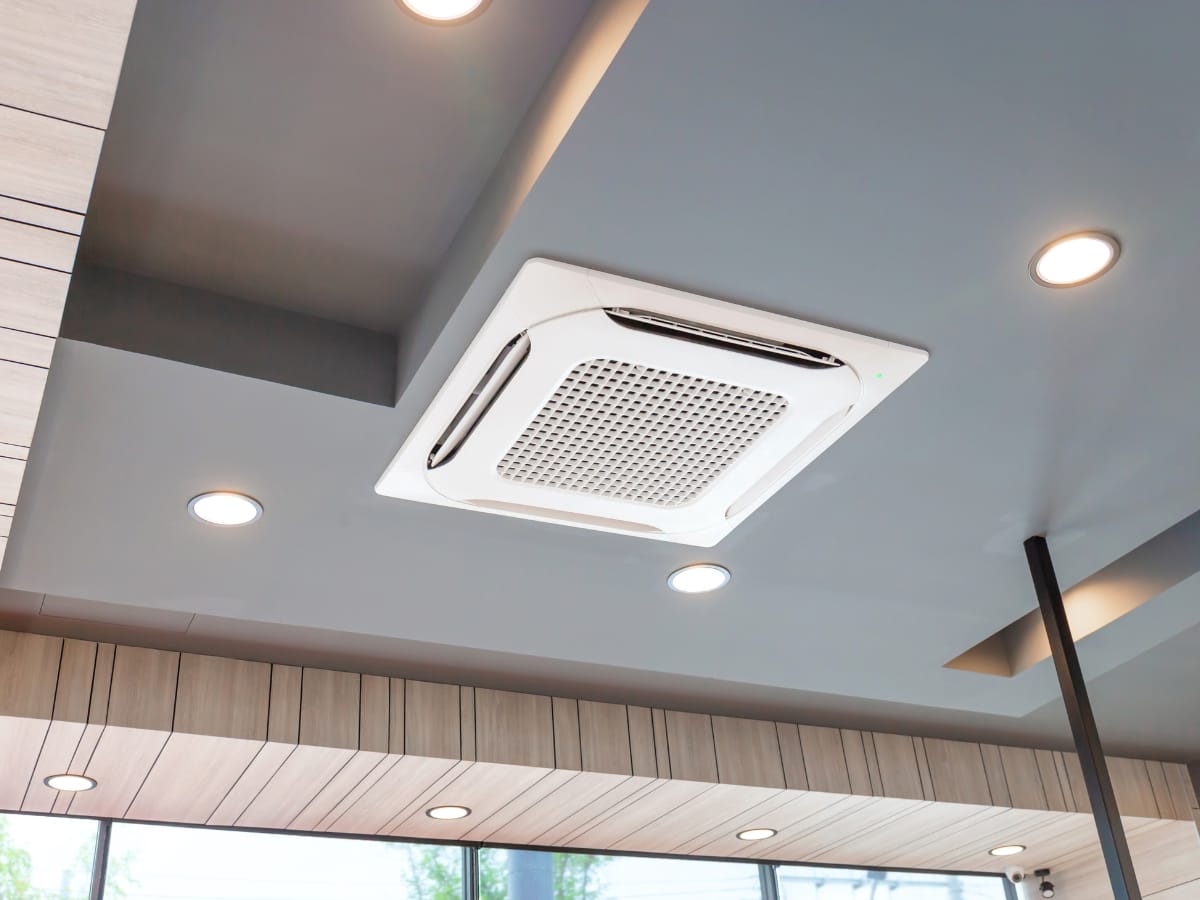
Optimizing a commercial HVAC system requires a coordinated approach that combines smarter controls, system upgrades, and diligent upkeep. The most successful facilities pair targeted temperature management with infrastructure improvements and proactive service routines to lower energy use and sustain comfort.
Smarter Controls and Zoning
Advanced thermostats and zoning technology let businesses condition only the spaces in use. By breaking a building into temperature zones—conference rooms, open-plan work areas, and private offices—managers avoid running the entire system at full capacity. Schedules link to real-time occupancy data, so units power down overnight or during weekends without manual intervention. This level of precision can cut heating and cooling loads by as much as 20 percent simply by matching HVAC output to actual needs.
Infrastructure Upgrades to Prevent Losses
Even the best equipment underperforms if ducts leak or mechanical rooms lack insulation. Sealing supply and return ducts stops conditioned air from escaping into unoccupied crawl spaces or attics, while wrapping chilled-water pipes and ductwork prevents thermal losses before air even reaches occupied areas. Retrofitting older rooftops with reflective coatings or adding insulation above ceilings further reduces heat gain, easing the burden on compressors. When heat transfer stays confined to intended zones, HVAC systems run less often and for shorter cycles.
Preventive Care for Consistent Performance
Regular maintenance is the single most important step to avoid efficiency decline. Dust, debris, and biological growth on coils reduce heat exchange by up to 12 percent, and clogged filters can cut airflow by more than 15 percent. Quarterly inspections by certified technicians keep components clean, lubricate moving parts, and recalibrate control sensors to within one degree of setpoints. Early detection of refrigerant leaks or worn bearings prevents small issues from forcing emergency repairs, which are often costly and disruptive.
Leveraging Building Automation Systems
A modern building automation system (BAS) ties all these strategies together, offering real-time visibility into temperatures, humidity, run times, and energy consumption. Automated fault detection flags anomalies—such as a sudden spike in compressor amps or unexpected pressure drops—allowing teams to schedule fixes before comfort is affected. Data dashboards track performance trends, highlighting where further savings are possible. By layering smart scheduling, remote monitoring, and predictive analytics, facilities managers turn HVAC from a fixed cost into a continuously optimized asset.
How Does Commercial HVAC Efficiency Help Prevent Sick Building Syndrome and Improve Employee Well-being?
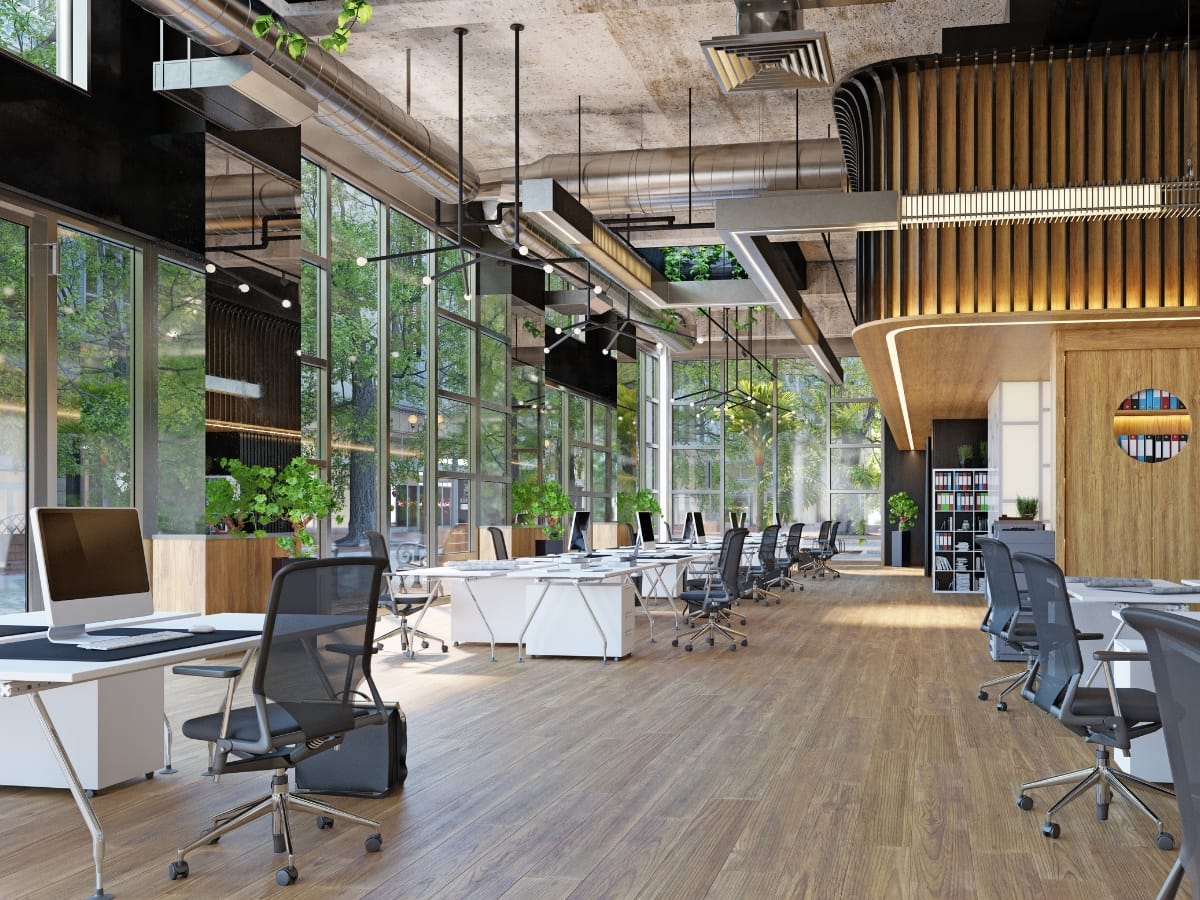
Sick building syndrome occurs when indoor pollutants, poor ventilation, or improper temperature and humidity levels trigger headaches, respiratory irritation, and fatigue. An efficient commercial HVAC system combats these issues by maintaining steady air exchanges, trapping contaminants, and balancing environmental conditions. When systems draw in at least twenty cubic feet of fresh air per minute for each occupant, studies show symptoms like eye irritation and headaches drop by nearly a third.
Ventilation and Air Quality
Introducing the right amount of outdoor air prevents pollutant buildup. High-efficiency filters capture dust, pollen and volatile organic compounds before they circulate through workspaces. By adjusting ventilation rates based on occupancy—using sensors that detect carbon dioxide—systems avoid both under-ventilation during busy periods and energy waste when areas are empty. This targeted approach limits exposure to allergens and airborne pathogens without driving up power use.
Comfort Control and Well-Being
Maintaining temperatures between 68 and 74 degrees Fahrenheit and relative humidity from 40 to 60 percent keeps employees comfortable and healthy. Balanced humidity reduces dry skin and throat irritation in winter while preventing mold growth during humid summers. Precise temperature control minimizes cold or hot spots, so workers stay focused rather than distracted by sudden drafts or radiating heat. Well-tuned HVAC systems use variable-speed motors and advanced coil designs to adjust in real time, preserving comfort without unnecessary runtime.
Productivity and Health Gains
Work environments with stable air quality and consistent comfort levels report noticeable improvements in performance. Research links high indoor air quality to up to an eleven percent rise in worker productivity and a twenty percent drop in absenteeism. Fewer sick days mean teams stay on schedule, and clear air supports sharper concentration. Over time, these gains translate into stronger morale, lower healthcare costs, and a more resilient workforce.
Long-Term Benefits of Comprehensive HVAC Strategies
Combining regular preventative maintenance with modern technologies—such as demand-controlled ventilation and variable refrigerant flow—extends equipment life and keeps systems running at peak efficiency. Routine filter changes, coil cleanings, and sensor calibrations prevent the typical annual efficiency loss of five to ten percent. Integrating these practices into a broader facilities management plan delivers lasting improvements in energy use, indoor air quality and overall workplace wellness. By investing in efficient commercial HVAC, organizations create healthier environments that support both employee well-being and business success.
Frequently Asked Questions
What are the signs that my commercial HVAC system needs maintenance?
Signs that your commercial HVAC system requires maintenance include inconsistent temperatures throughout the building, unusual noises or odors, increased energy bills, and frequent cycling on and off. Additionally, if employees report discomfort or respiratory issues, it may indicate poor air quality or system inefficiency. Regular inspections can help identify these issues early, ensuring optimal performance and preventing costly breakdowns.
How often should I schedule HVAC maintenance for my business?
It is recommended to schedule HVAC maintenance at least twice a year—once before the cooling season and once before the heating season. This proactive approach allows technicians to inspect, clean, and tune up the system, ensuring it operates efficiently. Some businesses may benefit from quarterly maintenance, especially in high-demand environments, to further enhance system reliability and performance.
What are the benefits of upgrading to a smart HVAC system?
Upgrading to a smart HVAC system offers numerous benefits, including enhanced energy efficiency, improved indoor air quality, and greater control over temperature settings. Smart systems utilize IoT technology to learn occupancy patterns, allowing for real-time adjustments that optimize energy use. Additionally, they can provide alerts for maintenance needs, reducing downtime and extending the lifespan of the equipment.
How can I improve indoor air quality in my commercial space?
Improving indoor air quality (IAQ) can be achieved through several strategies, such as upgrading to high-efficiency air filters, ensuring proper ventilation, and using air purifiers. Regular maintenance of HVAC systems, including cleaning ducts and coils, also plays a crucial role. Implementing a monitoring system for CO₂ levels can help maintain optimal air quality, ensuring a healthier environment for employees.
What is the impact of humidity on HVAC efficiency?
Humidity levels significantly affect HVAC efficiency. High humidity can lead to increased cooling loads, causing the system to work harder and consume more energy. Conversely, low humidity can cause discomfort and respiratory issues. Maintaining humidity levels between 40-60% helps optimize HVAC performance, enhances comfort, and protects equipment from damage, ultimately leading to energy savings and improved indoor conditions.
How do energy-efficient HVAC systems contribute to sustainability?
Energy-efficient HVAC systems contribute to sustainability by reducing energy consumption and lowering greenhouse gas emissions. These systems utilize advanced technologies and design principles that minimize energy waste, leading to a smaller carbon footprint. By investing in energy-efficient solutions, businesses not only save on operational costs but also support environmental initiatives, aligning with corporate social responsibility goals.
What role does employee feedback play in optimizing HVAC performance?
Employee feedback is crucial in optimizing HVAC performance as it provides insights into comfort levels and potential issues. Regularly soliciting input from staff can help identify areas for improvement, such as temperature adjustments or air quality concerns. By addressing these concerns, businesses can enhance workplace satisfaction, reduce absenteeism, and ultimately boost productivity, creating a more conducive work environment.
Conclusion
Your commercial HVAC system does more than regulate temperature—it directly impacts employee comfort, energy costs, and overall workplace productivity. At Galgon HVAC & Mechanical Service, we specialize in optimizing HVAC efficiency to create healthier, high-performing work environments. Whether you need commercial HVAC maintenance, repairs, or a system upgrade, our expert team delivers reliable solutions tailored to your business needs. Take control of your workspace comfort today—call us at (404) 352-1500 or fill out our online form to request service or a quote. Let Galgon HVAC help you build a more productive (and comfortable) workplace.
